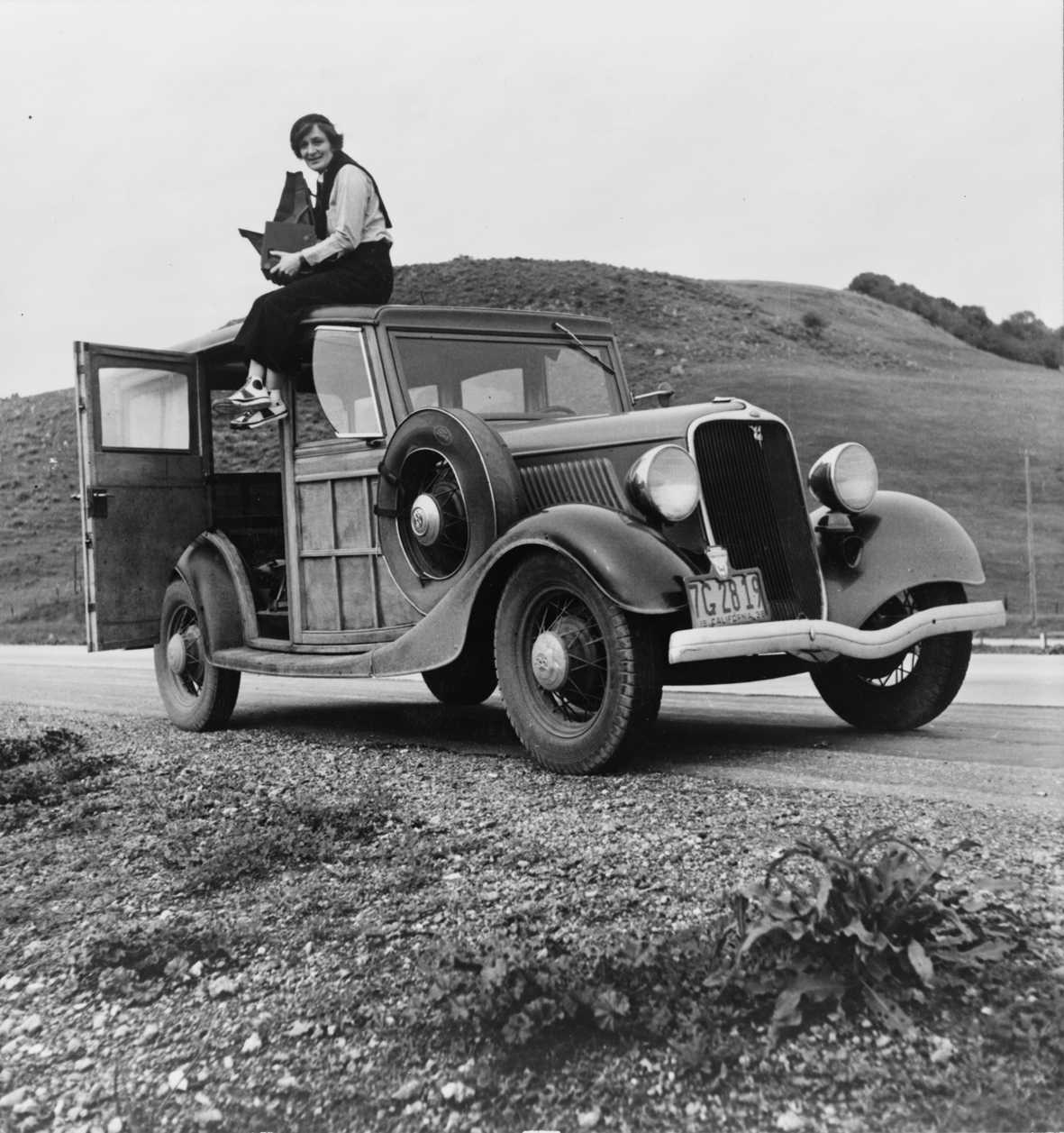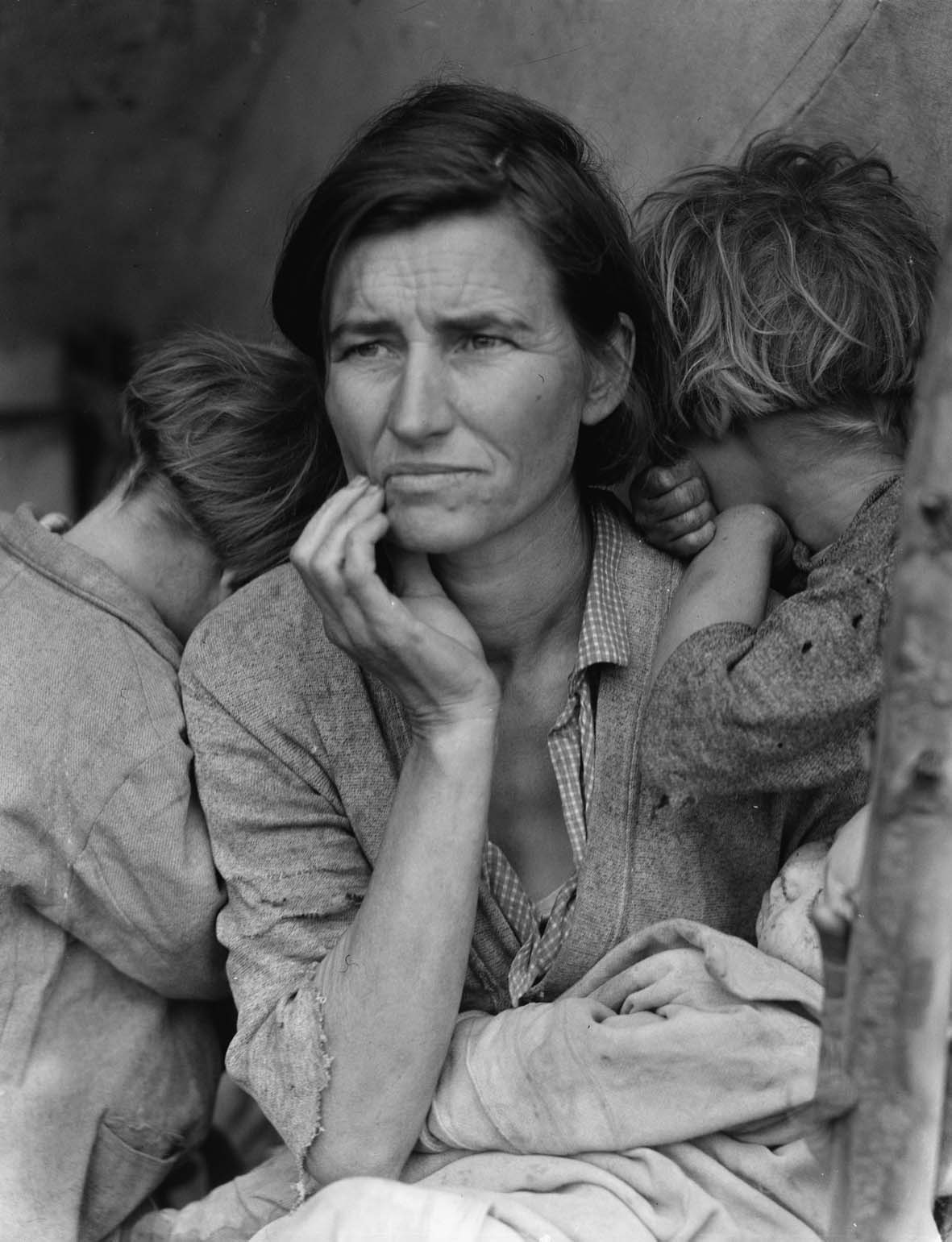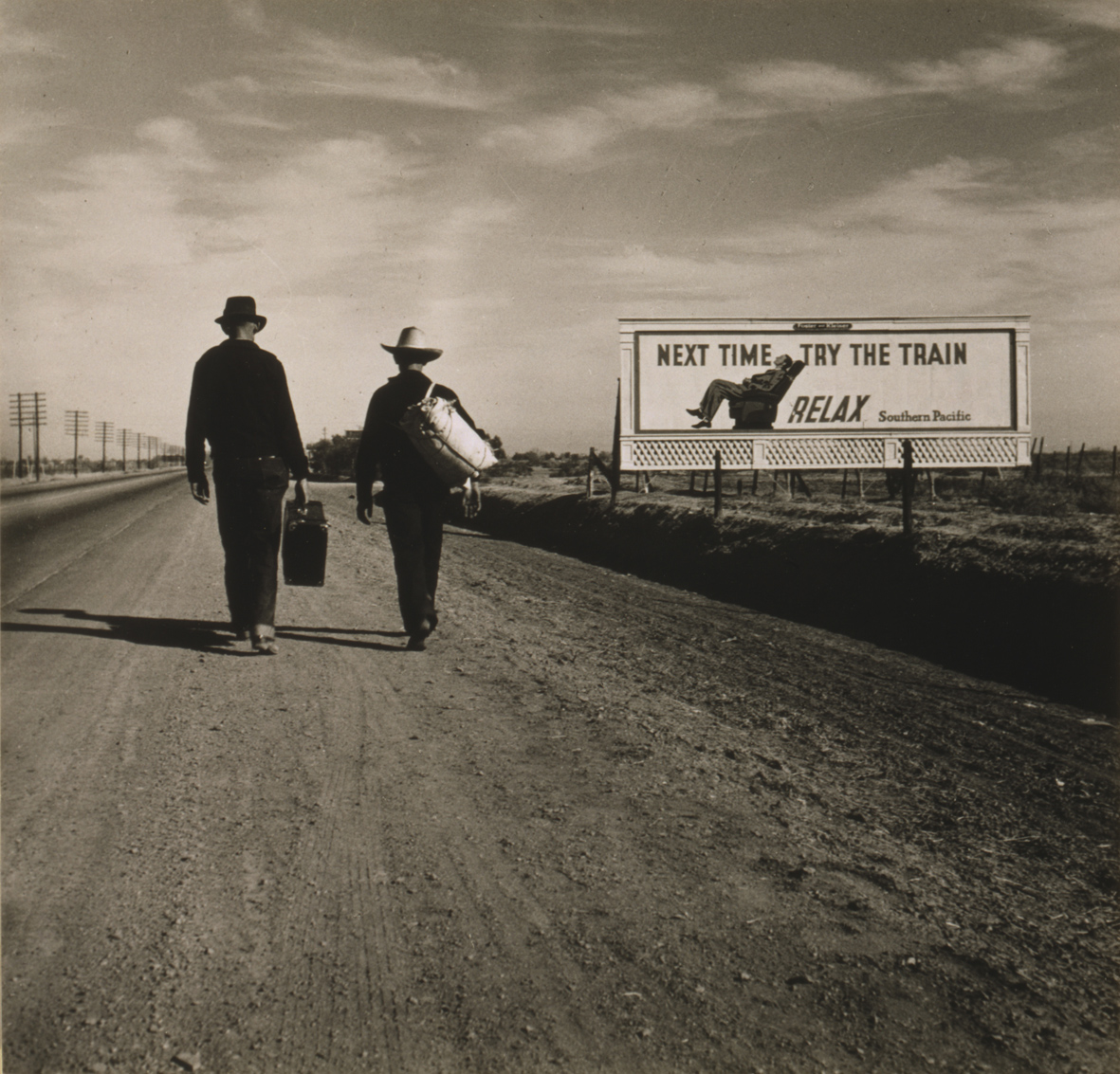
Have you ever looked at an image that so deeply captures the essence of humanity that you feel part of that moment? Well, Dorothea Lange’s photographs provide you with just that feeling. An iconic photographer, born in 1895 and passed away in 1965, Dorothea Lange had the incredible ability to do just that.
Co-founder of ‘Aperture’ in 1952, a magazine that redefined photography as we know it, she was the first woman photographer to be celebrated with a retrospective at MoMa in 1965.
Dorothea Lange left an indelible mark on the history of photography. In this post I tell you who the woman behind the lens really was and what stories she so passionately sought to tell.
Dorothea Lange’s photographs: portraits of America in black and white

Dorothea Lange: Migrant Mother (Destitute pea pickers in California. Mother of seven children. Age thirty-two), Nipomo, California, 1936, Farm Security Administration, Office of War Information Photograph Collection, Library of Congress Prints and Photographs Division Washington, D.C., USA
Dorothea Lange was no ordinary photographer. Born into a middle-class family in New Jersey, she could have chosen to use her talent to immortalise the celebrities or influential figures of her time. Instead, she turned to those whom society had overlooked – the ‘last’ people of an America in the grip of the despair of the Great Depression.
FROM HIGH SOCIETY TO THE VOICE OF THE INVISIBLE
From the very beginning, Dorothea Lange’s photographs capture the deepest souls of people.
In each of her shots there is a sense of understanding, sensitivity and deep humanity, creating an ‘inclusive’ narrative that transcends mere sympathy.
Her awareness of the social context, fuelled in part by her relationship both personally and professionally with her economist husband Paul Taylor, has further intensified the power of her images.
THE PHOTOGRAPHS OF DOROTHEA LANGE AND SOCIAL COMMITMENT
Dorothea Lange’s career began in New York, learning from masters such as Clarence White and Arnold Genthe. However, it was a photographic journey, begun in 1918 and abruptly interrupted due to lack of money, that led her to San Francisco and the decision to open her own studio.
In the 1930s Dorothea Lange embraced straight photography, becoming a passionate chronicler of reality, capturing the lives of the dispossessed, from the homeless to the farm workers of California.
A LENS ON THE GREAT DEPRESSION
It was during the Great Depression that Dorothea Lange joined the ‘Farm Security Administration’, rising to prominence in this social and photographic project at the same time.
Dorothea Lange’s photographs from this period document the stark reality of rural, drought-stricken America, producing some of her most poignant and famous works, including the famous ‘Migrant Mother’.
This image, in particular, is not only a testimony to the social crisis of the time but an artistic expression that continues to speak of universal themes such as poverty, migration and discrimination.
SOCIAL CRITICISM IN THE PHOTOGRAPHS OF DOROTHEA LANGE
Lange’s commitment did not stop with the Great Depression.
On behalf of the government, he also documented life in internment camps for Americans of Japanese descent during World War II. These images, however, were largely censored due to their frank criticism of government policy and were only made public many years later, testifying to the insightfulness and courage of Lange’s artistic vision.

Dorothea Lange: Toward Los Angeles, California, 1937, Farm Security Administration, Office of War Information Photograph Collection, Library of Congress Prints and Photographs Division Washington, D.C., USA
Dorothea Lange was not just a photographer but a visual storyteller, a chronicler of human history and a voice for those who would otherwise go unheard. Her photographs are more than just images, they are powerful invitations to understanding, empathy and, above all, remembrance. And you, what do you see when you look through Dorothea Lange’s lens?

